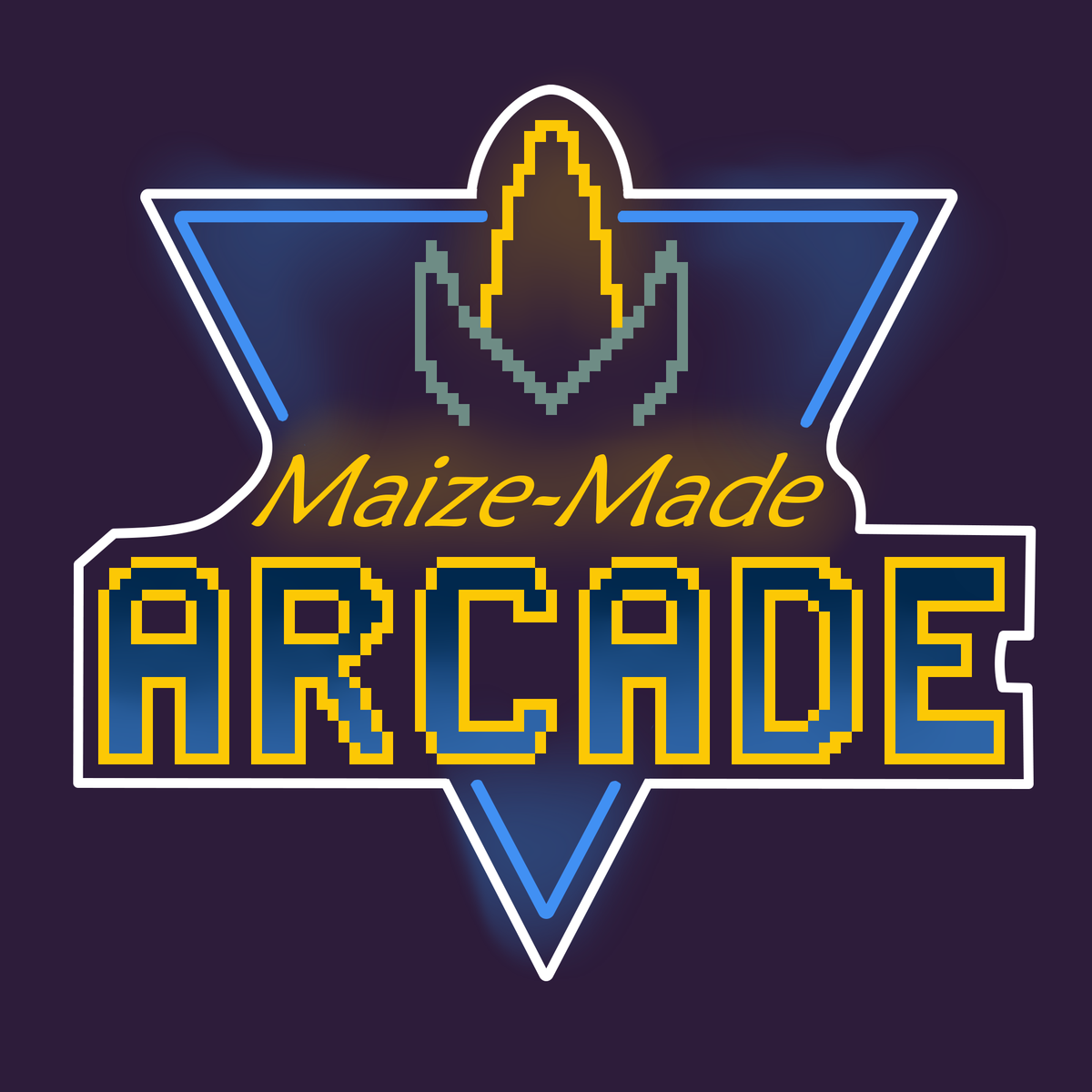Maize-Made Arcade

After encountering several roadblocks, we are excited to announce that the Maize-Made Arcade is fully assembled and functional! The only things left to complete are audio integrations, polishing the (mostly completed) games, and potentially adding a game or two.
For the full project spec (how each component works) please see the GitHub repository for this project. In the rest of this article, we'll focus on lessons learned from this project and how we will be moving forward.
What did we learn?
The goal of TPE is to document the entire project development process, which of course includes many mistakes along the way. That's all part of the process, and we hope you can learn from our mistakes along with us.
Time Management
The most pressing issue was, of course, timeline. Both Sandro and Tyler are full-time college students and participate in extracurriculars on top of working on TPE projects.
This is where lessons in time management come in, the way we were delegating time to TPE was simply by stating "We'll work on it when we have time!" Turns out, that doesn't work very well. There are a billion things a college student could be doing with their free time, so being unspecific about when we'd designate time specifically to TPE was unhelpful.
What are we going to change in the future, then? We plan on specifically scheduling blocks of time throughout the week dedicated to TPE. There's a much higher chance of success that way and we hope we can push out more projects / content.
Mechanical Design & Implementation (Tyler)
The manufacturing phase progressed smoothly without any major incidents. However, opportunities for improvement still emerged. A significant and novel challenge of this project was the woodworking; crafting precise angles, especially on large plywood pieces, proved more complex than anticipated. As a result, there were discrepancies between the original CAD model and the real, manufactured components.
To progress in a timely fashion, I took a practical approach, building the arcade machine first, and then adjusting the design later. This experience highlighted the importance of considering manufacturability during the design phase. Moving forward, I'll prioritize understanding the manufacturing process to ensure smoother integration of digital designs with physical fabrication.
Working with various power tools deepened my understanding of fabrication techniques, enhancing my skills and refining my grasp of the design-to-production process.
PCB Development (Sandro)
Humans are pattern-seeking animals and have a strong tendency to make assumptions based on past experiences, and for good reason. However, it's important to identify when that can lead to problems in the project development pipeline.
To give a little background, LEDs (Light-Emitting Diodes) are unidirectional, i.e. they can only be powered with current flowing in one direction. It is important, then, to mount them properly onto a circuit board, otherwise they simply won't work. All that is well and good, so where did this go wrong?
I made the (incorrect) assumption that the anode (negative pin) on the PCB was marked with a dot, because up until this point that's the only thing I've seen. Well, turns out that the specific footprint I used for the LEDs actually had the cathode (positive pin) marked. Consequently, all of the LEDs on the finished board are soldered on backwards! Thankfully, with the specific design I chose the LEDs aren't required for the buttons and joystick inputs to work properly, but it is definitely a lesson learned.
This issue spurred two actions: firstly, I will not make any assumptions about components I'm using and always reference the datasheet, and secondly, instead of using pre-made footprints I will be building up a custom component library for TPE, manually creating the footprints from the data sheets. This will both be a great learning experience and allow for standardization across our projects.
What's next?
Originally we were planning on tackling the Nixie Tube project, however the tubes require fairly high voltages and it's not something we're comfortable handling until we get a bit more experience, so that project will require more time.
Currently we are conducting research for the development of a custom remote-controlled plane. The details have not been fleshed out yet but it is likely we will work on several of its components as separate projects then integrate them together.
In the meantime, I've recently completed a mockup of our new and improved website design! Be on the lookout for a blog post (or potential video!) related to that soon.
Speaking of blog posts, we want to be more consistent with that as well, so from now on we will be posting a blog every other Sunday at noon!
